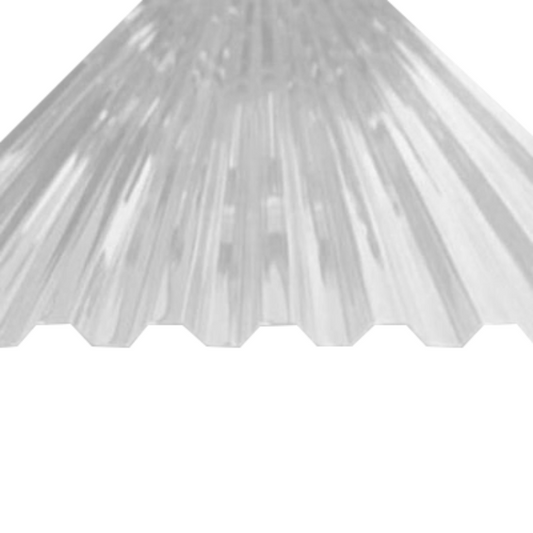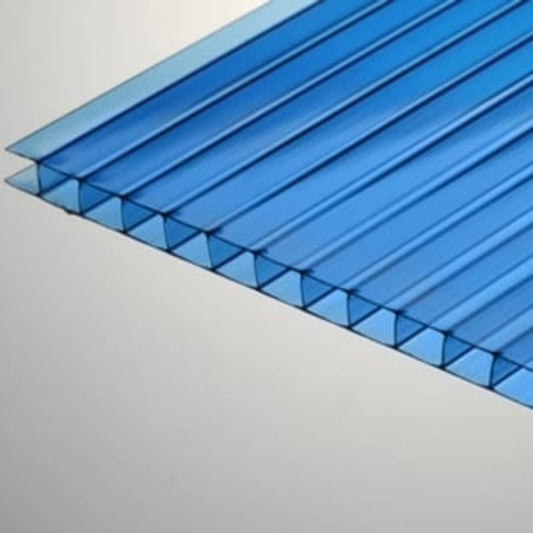-
Twinwall Polycarbonate Sheet - All Sizes
Vendor:Roofing4US PolycarbonatefromRegular price $41.78Sale price $41.78 Regular priceUnit price per
Greenhouse Siding | Greenhouses | Greenhouse Panels
What is Greenhouse Siding?
Greenhouse siding refers to the wall and roof panels used in greenhouse construction, typically made from polycarbonate—a lightweight, shatter-resistant material designed to transmit light while providing insulation. These panels are essential in creating a controlled growing environment by regulating temperature, humidity, and light exposure. At Roofing4US, we offer high-performance polycarbonate siding sheets that are ideal for both hobby and commercial greenhouses.
Various alternatives exist for greenhouse siding materials
Glass
Glass siding offers exceptional transparency and sunlight infiltration. It imparts a timeless and visually pleasing aspect to greenhouses. Nonetheless, glass can be weighty and come with higher installation expenses. Double or triple-pane glass enhances insulation capabilities.
Polycarbonate Panels
Polycarbonate panels are a popular choice due to their robustness, insulating properties, and capacity to withstand impacts. These panels come in single, double, or multi-wall configurations, allowing options for diffusing light and enhancing thermal efficiency.
Acrylic Panels
Acrylic panels deliver commendable light transmission and clarity. They are lighter than glass and offer decent insulation. However, they are more susceptible to scratching compared to other materials.
Fiberglass Panels
Fiberglass siding is lightweight and diffuses incoming light. It resists corrosion and showcases durability, albeit light passage might wane over time due to wear.
Polyethylene Film
Polyethylene film represents a cost-effective choice that diffuses light effectively. It is lightweight, easy to install, and suited for temporary structures or projects constrained by budget considerations. However, periodic replacement is required.
How to Choose the Right Greenhouse Siding Panels
- Climate Conditions: Consider your local weather—regions with cold, windy, or extreme temperatures benefit from siding with high insulation and durability.
- Budget: Greenhouse siding materials vary in cost. Choose an option that balances performance and affordability based on your project size and goals.
- Aesthetic Preferences: If your greenhouse is a visual feature in your garden, the appearance of the siding (for example- clear, frosted, or hammered finish) can enhance its appeal.
- Plant Requirements: Different crops need different growing conditions. Choose panels that offer suitable light transmission and thermal control based on what you plan to grow.
- Maintenance Needs: Some siding materials are low-maintenance, while others may require regular cleaning or UV protection to preserve clarity and lifespan.
Functionality & Performance: Weigh factors like light diffusion, thermal insulation, and UV protection to ensure your greenhouse creates an optimal growing environment.
Which Siding is Best for a Greenhouse?
The best siding and covering for a greenhouse depends on your climate, budget, and growing needs. However, some materials consistently stand out for their performance and versatility:
Twin-Wall Polycarbonate Sheets
Highly recommended for greenhouses, twin-wall polycarbonate offers excellent thermal insulation, high light transmission, and UV protection. It's lightweight, impact-resistant, and ideal for year-round growing.
Corrugated Polycarbonate Sheets
These are durable, weather-resistant, and easy to install. They provide good light diffusion and are commonly used in both hobby and commercial greenhouses.
Clear Corrugated Fiberglass Panels
A great choice for greenhouse roofing, these panels are strong, weatherproof, and allow plenty of light in while offering some insulation.
Fiberglass Commercial Sheets
Designed for durability and longevity, fiberglass sheets are suitable for larger, industrial-scale greenhouses that demand resilience in harsh conditions.
Acrylic Sheets (Clear or Mirror Finish)
Acrylic panels offer excellent clarity and aesthetic appeal, often used in projects where appearance matters. While not as insulating as polycarbonate, they are UV-resistant and weatherproof.
Corrugated Plastic Sheets
An affordable option for temporary or budget-friendly greenhouse projects. While not as strong as fiberglass or polycarbonate, they still offer decent weather protection and light diffusion.
Benefits of Greenhouse Siding and Greenhouse Covering
- Greenhouse Siding and Greenhouse Covering allow high light transmission for healthy and even plant growth.
- Provides excellent thermal insulation to maintain stable temperatures.
- Includes UV protection to shield plants and extend panel lifespan.
- Offers high durability and impact resistance against harsh weather.
- Creates a controlled environment for year-round cultivation.
- Supports increased crop yields through optimal growing conditions.
- Requires minimal maintenance and is easy to clean.
Greenhouse Siding and Greenhouse Covering come in various styles to suit different greenhouse needs and aesthetics.
Why Buy Greenhouse Siding from Roofing4US?
- Expert Support: Our product team can help you find the best solution for your growing space.
- Top Quality Brands: We stock only premium, UV-stabilised polycarbonate sheets designed for long-term durability.
- Fast Nationwide Delivery: With hundreds of shipping locations across the US, we get your order to you quickly.
- Competitive Prices: Buy with a great value without compromising on quality.
- Trusted by Growers: From home gardeners to commercial growers, Roofing4US is the go-to source for greenhouse building materials.

 Rated Excellent
Rated Excellent


